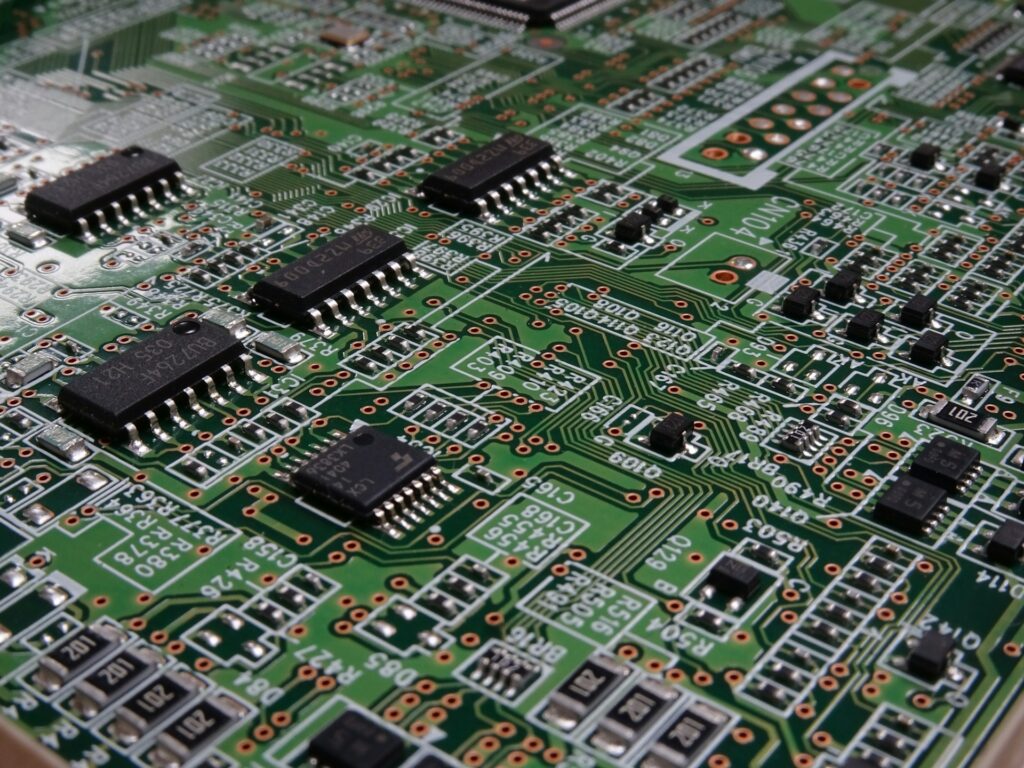Electronics: Fundamentals of Analog & Digital Systems

Who Should Enroll?
- Students beginning a degree in Electrical, Electronic, or Computer Engineering.
- Anyone preparing for certification or further specialized study in areas like IoT, Robotics, or Telecommunications.
- Technicians and hobbyists seeking a deeper, theoretical understanding of circuit behavior.
Prerequisites
- Strong foundational knowledge of Algebra and Trigonometry.
- Basic understanding of high-school level Physics (especially electricity and magnetism).
Electronics: Fundamentals of Analog & Digital Systems
1. Circuit Analysis & Passive Components
-
DC & AC Circuit Theory: Mastering fundamental laws (Ohm’s Law, Kirchhoff’s Laws) and analysis techniques (Nodal Analysis, Mesh Analysis, Thevenin’s/Norton’s Theorems) for both direct current (DC) and alternating current (AC) circuits.
-
Passive Components: Detailed study of Resistors, Capacitors, and Inductors—their characteristics, behavior in time and frequency domains, and series/parallel combinations.
-
Resonance and Filtering: Analysis of RLC circuits and the design of basic passive filters (Low-Pass, High-Pass, Band-Pass).
-
Lab Skills: Practical use of test equipment including Digital Multimeters (DMMs) and Oscilloscopes for circuit measurement and verification.
2. Analog Electronics & Semiconductor Devices
-
Semiconductor Physics: Introduction to the principles of P-N junctions, doping, and the operation of fundamental semiconductor materials.
-
Diode Applications: Analysis of diodes in circuits, including half-wave and full-wave rectifiers, clippers, and voltage regulators (Zener Diodes).
-
Transistors (BJTs & MOSFETs): In-depth study of the characteristics and operating regions of Bipolar Junction Transistors and Metal-Oxide-Semiconductor Field-Effect Transistors.
-
Amplifier Design: Introduction to the use of transistors for amplification, focusing on biasing techniques and basic amplifier configurations.
3. Digital Electronics & Logic Design
-
Number Systems & Logic Gates: Understanding binary, octal, and hexadecimal systems; implementation of basic logic functions using AND, OR, NOT, NAND, NOR, XOR gates.
-
Boolean Algebra & Simplification: Applying theorems to simplify logic expressions and design efficient circuits using Karnaugh Maps (K-maps).
-
Combinational Logic: Design of essential circuits like adders, subtractors, multiplexers (MUX), and demultiplexers (DEMUX).
-
Sequential Logic: Principles of memory elements: Latches and Flip-Flops (SR, JK, D, T); design of counters and shift registers.
4. Operational Amplifiers (Op-Amps) & System Concepts
-
Ideal Op-Amp Characteristics: Understanding the golden rules of the ideal operational amplifier and its common modes of operation.
-
Op-Amp Circuits: Design and analysis of basic circuits, including Inverting and Non-Inverting Amplifiers, Summing Amplifiers, Integrators, and Differentiators.
-
Active Filters: Using op-amps to design and analyze higher-order active filters.
-
Transducers & Interfacing: Introduction to interfacing electronic circuits with real-world inputs (sensors) and outputs (actuators), bridging the gap to embedded systems.
Course Overview
This foundational Electronics course provides a comprehensive introduction to the principles, components, and systems that form the basis of all modern electronic technology. From basic circuit theory to the design of complex digital and analog systems, you'll gain the theoretical knowledge and practical skills necessary to analyze, design, and troubleshoot electronic circuits. This course is the essential starting point for students pursuing careers in embedded systems, telecommunications, power electronics, and integrated circuit design.